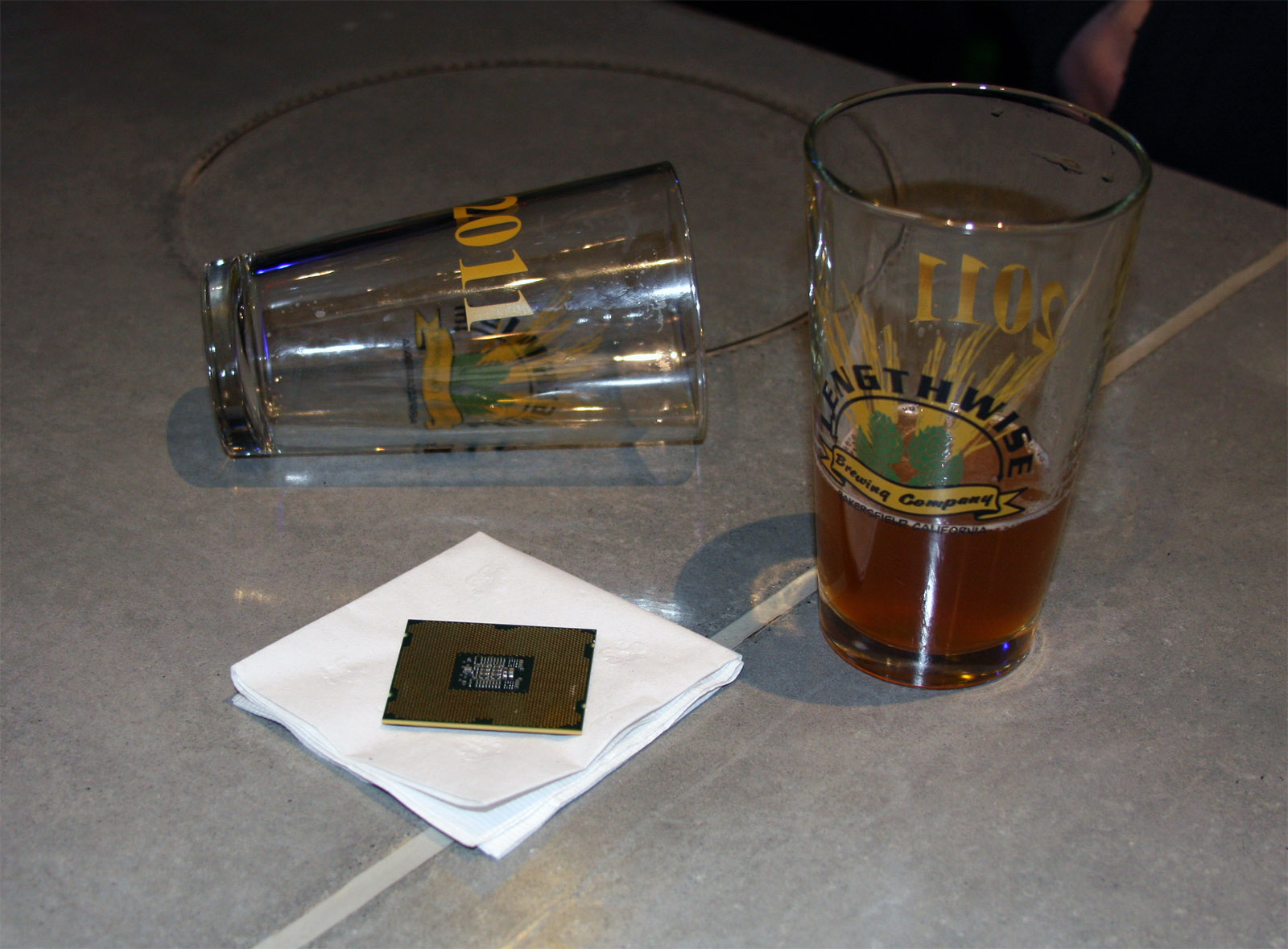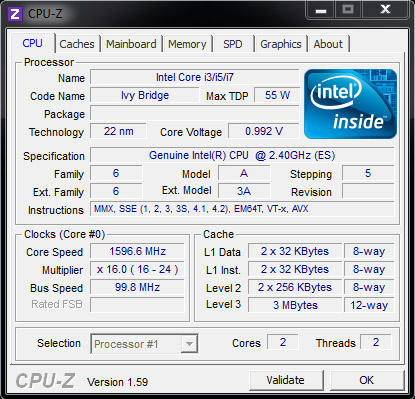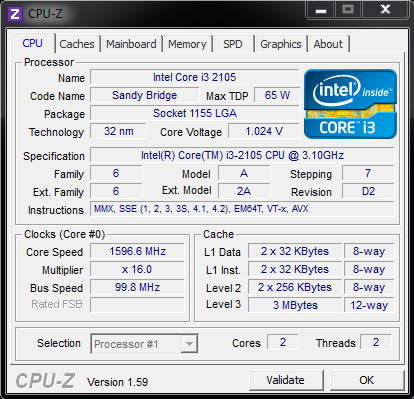Intel Core i7-3930K And Core i7-3820: Sandy Bridge-E, Cheaper
Core i7-3960X is undeniably fast. But at more than $1000, it’s hardly an option for most enthusiasts. We got our hands on the Core i7-3930K and Core i7-3820 to gauge their overclocked performance and determine if they’re able to best the flagship part.
Core i7-3930K And -3820 Get Reviewed
Editor's Note: As you'll see by the end of this story, we liked the Core i7-3930K for its specific purpose quite a bit. It's a pleasure, then, to offer four of these CPUs to our readers. Of course, we realize that the platform is still pricey, so we also have a quartet of Intel DX79SI motherboards and as many 120 GB SSD 320 drives. Four lucky winners will walk away with a trio of parts to get them started on their next machine. Read to the end of this story for your chance to win!
We love to lust after the latest hardware, no matter the cost. But when it comes time to buy, sexy takes a back seat to sensible. That’s why a thousand-dollar processor like Intel’s Core i7-3960X doesn’t really add up. According to Intel’s official price list, you can get the Core i7-3930K for exactly $416 dollars less, sacrificing 3 MB of shared L3 cache and 100 MHz in the process. There’s an Epic Meal Time phrase I could use to illustrate the intelligence of that trade-off, but I’ll just leave it as: smart.
And so today’s story is brought to you by a couple of different ideas. First, we got our hands on the other two LGA 2011-based parts: Core i7-3930K and Core i7-3820. We’ll give you the performance data on those chips running at their stock settings.
The former launched alongside Core i7-3960X, although it looks like Intel took a look at the competitive landscape, realized there wasn’t anything to contend with Sandy Bridge-E, and tacked an extra $10 onto its -3960X and $33 to its -3930K. As a result, the $550 I cited in my launch coverage is now officially $583, but closer to $600 once the online guys add their mark-up.
The latter wasn’t as easy to track down. Although Core i7-3820’s specifications are known, it’s not officially available until 2012. But since we’ve heard that a lot of really sensitive stuff gets left behind at bars, we’ve been drinking ourselves silly, hoping to scoop up a lonely Sandy-E with only half of her faculties intact.
Sandy Bridge-E finds itself in a tough position no matter which model you flag for its potential superiority over the other two, though. Stepping away from Intel’s flagship platform, you’re faced with Sandy Bridge, the mainstream architecture we’ve praised over the last 11 months for its stock performance, reasonable cost, efficiency, and overclockability. At $1000, $600, and an undisclosed third price (a bar fly suggested $285), it’s hard to see any conceivable way to have a serious discussion about Sandy Bridge-E’s value compared to unlocked alternatives like Core i5-2500K and Core i7-2600K.
And then there’s Ivy Bridge, expected to land in the first half of next year. Informed enthusiasts have to be wary of buying into Sandy Bridge-E knowing that Ivy Bridge could deliver better performance in basic desktop applications.
Get Tom's Hardware's best news and in-depth reviews, straight to your inbox.
How much of a threat will the quad-core Ivy Bridge-based chips be to six-core Sandy Bridge-E processors? It’s too early to say for sure, since production-quality hardware is still months away. But we were able to scoop up an Ivy Bridge-based 55 W Core i3 at the very same watering hole and run a handful of tests. My numbers are quite a bit lower than what Intel suggests on these leaked slides though, so we’re going to wait and see how the early processors evolve before posting charts. Should enthusiasts worry that Ivy Bridge will usurp their Sandy Bridge-E-based systems? I don’t think so. It kind of sucks that the high-end crowd has to wait another year or so for Ivy Bridge-E, but these two segments want different things, and a 77 W quad-core CPU isn’t going to displace a 130 W hexa-core processor in those environments.
Besides, I’m not 100% convinced that the Ivy Bridge/6-series chipset compatibility story is going to end as harmoniously as many folks with P67 and Z68 boards hope.
Deriving Value From The High-End?
I read all of the comments from my review of Core i7-3960X proclaiming Sandy Bridge-E fodder for chumps with too much spare change. And although I agree insofar as Intel’s flagship isn’t the right model to buy for maximizing bang for your buck, you simply have to concede that, in threaded applications, it’s faster than both the Core i7-990X it replaces and the four-core Core i7-2600K to which it’s so easily compared. As a result, there will be affluent early adopters and professionals eager to pay top dollar for the fastest single-processor system available.
Here’s the thing, though. Having the money to spend shouldn’t compel anyone to blow it. Now that the Sandy Bridge-E launch is history and prices are publically available on sites like Newegg and TigerDirect, we can add up the cost of the parts we used and consider scaling back to save some cash.
The Intel DX79SI motherboard we used for our launch piece (and continue to use today) just hit Newegg's virtual shelves at $280. Add to that $1050 for a Core i7-3960X and $800 for two 16 GB DDR3-1333 kits from Crucial, and you’re looking at a total of $2130 for the three platform-specific components. Now, it’s clear that the insane price of high-density memory is throwing that number off. So let’s avoid sensationalizing the bottom line and swap over to the 16 GB DDR3-2133 kit from G.Skill that I used to test memory scaling in the original story. At $180, we end up with a (relatively) more palatable $1530.
Can we pare back the parts list to make Sandy Bridge-E a better buy for a larger group of enthusiasts…without sacrificing performance? I’ll explore the benchmarks shortly, but here’s the parts list that I’m going to use on my quest:
| Components From Today's Experiment | Price on Newegg |
|---|---|
| Intel Core i7-3930K | $600 |
| ASRock X79 Extreme4-M | $225 |
| G.Skill F3-12800CL9Q-8GBRL (4 x 2 GB DDR3-1600) | $55 |
| Total: | $880 |
At $225, ASRock’s X79 Extreme4-M is the least-expensive (and conveniently microATX-sized) X79-based motherboard available. G.Skill’s 8 GB, DDR3-1600 Ripjaws kit isn’t particularly flashy, but it gets the job done at a capacity point we’d still consider beefy. And of course, the Core i7-3930K gets us as close to Intel’s flagship as possible without giving up any cores. The grand total? $885. That’s an almost $650 chunk off of the original setup after dropping the high-density memory kit.
Although you’re still paying nearly $400 more than the cheapest Z68-based board, the same 8 GB memory kit, and a Core i7-2700K, six cores simply aren’t available in the mainstream space. Suddenly, the prospects of a fast hexa-core beast look a lot rosier for the folks who skipped over Sandy Bridge entirely in anticipation of higher-end hardware.
Current page: Core i7-3930K And -3820 Get Reviewed
Next Page Overclocking Sandy Bridge-E On A Budget-
compton This is a really excellent analysis. Clearly, I must be drinking at the wrong places because I never leave the pub with any hardware nicer than a hangover.Reply -
theuniquegamer So nice overclocking at 4.5ghz. I can expect that the upcoming ivy bridge unlocked series may be stable atleast 4.2 will all 4 cores active. I can't wait till Q2 next year to see benchmarks .Reply -
Dacatak Possible TYPO in the bottom graph for Dirt 3 benchmark.Reply
FX-8150 benchmark with no AA says "68.8" FPS. I think it's more like "48.8". -
JOSHSKORN For gaming (the high end CPU intensive), is there any noticeable difference between the 2500k and the 3960X?Reply -
Dacatak JOSHSKORNFor gaming (the high end CPU intensive), is there any noticeable difference between the 2500k and the 3960X?Reply
If by "noticeable" you mean "perceivable to mere mortals", then no.
If you can in fact notice the difference between 105 vs 110 FPS, then you are a god, and you deserve only the best. -
spunkyddog I bought the i7-3930K with 32GB of DDR3 1600 RAM last week and assembled a couple days ago. I have two Kingston 120GB SSDs in RAID that have been benched on my system at a theoretical 1,100MB/S Read and 1,300MB/S Write. Coming from a Pentium D 3.0GHz, this was like night and day. My renders went from 40minutes to 1minute. I'm not overclocking purely for the fact that this thing's a beast already and I'm doing high-end 3D work using Maya, Photoshop, After Effects, Video, etc. Also - I like the peace and quiet.Reply
Intel did an awesome job with the SBE line - despite the fact that we're missing some wanted/promised features (native support for USB and PCI-Express 3.0. I'm waiting out for the PCI 3.0 cards before I upgrade my graphics... curious if the Asus P9X79 Pro will hold it's promises.
Thanks Chris for reviewing this processor. I felt like I went out on a limb getting this processor over the Extreme, but the $600 was well worth it. -
cangelini spunky,Reply
Glad you're enjoying. You do, actually get PCIe 3.0 support, but no USB 3.0, unfortunately.
Dacatak,
Yup, typo--fixing now! -
sna the only good reason to get X79 is the more ram .. u can get cheap 32G ram system , or go for 64G of ram and enjoy a ram diskReply
it is a good thing -
soccerdocks The Overclocking Sandy Bridge-E On A Budget page states, "With all of that said, 4.5 GHz was rock-solid down at 3.61 V". I'm pretty sure you meant 1.36 V.Reply -
cangelini soccerdocksThe Overclocking Sandy Bridge-E On A Budget page states, "With all of that said, 4.5 GHz was rock-solid down at 3.61 V". I'm pretty sure you meant 1.36 V.Reply
Indeed, fixed! At 3.6 V, we'd have dead Sandy. :)




